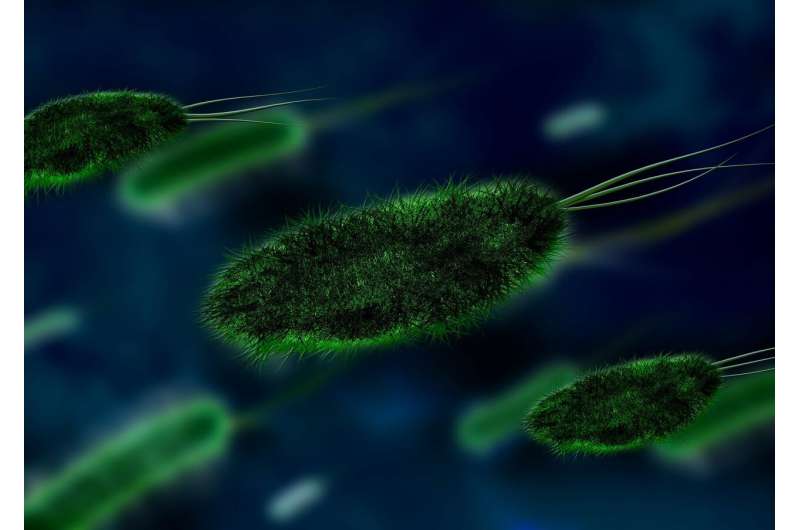Pathogen-repellent wrap shown to shed viruses as well as bacteria

New research by the inventors of a promising pathogen-repellent wrap has confirmed that it sheds not only bacteria, as previously proven, but also viruses, boosting its potential usefulness for interrupting the transmission of infections.
The new wrap, designed to protect against contamination on high-touch surfaces such as doorhandles and railings, is now moving toward scaled-up production through FendX Technologies, Inc., which last year licensed the technology developed by inventors Leyla Soleymani and Tohid Didar, both of McMaster's Faculty of Engineering.
"This is a line of defense against emerging pathogens, including future threats we have not yet seen," Soleymani says.
"This technology closes the door to the surface transfer of pathogens," Didar says. "Everything is moving in the right direction as this invention continues to evolve and move toward the marketplace."
Soleymani, Didar and their McMaster colleagues have published three new papers about RepelWrap—two of them today—since their proof-of-concept research was first made public in December 2019—on the eve of the COVID-19 pandemic.
The first of the new papers, published last month in the journal ACS Applied Materials & Interfaces, shows the wrap has the same effect using a new formulation which eliminates the use of fluorine, a chemical associated with health and environmental concerns.
The second paper, published today in the nanotechnology journal Small, demonstrates a novel manufacturing method that transforms the wrap into highly flexible transparent films that repel pathogens and prevent blood clots under flow, to be used in medical catheters and tubing. The team has filed patents for the new technologies.
The third paper, published today in the journal ACS Applied Materials & Interfaces, shows the surface of the wrap is effective in repelling not just bacteria, as demonstrated in the proof-of-concept research, but also viruses, substantially increasing its utility.
The latest research, using a real-world model developed by Ali Ashkar's lab in McMaster's Michael G. DeGroote School of Medicine, shows how the wrap sheds a herpes virus and a coronavirus closely related to SARS-COV2 in structure, meaning it is highly likely to repel COVID itself.
The product works using a self-cleaning surface design microscopically "tuned" to shed everything that comes into contact with it, down to the scale of viruses and bacteria. The design was inspired by the surface of the water-shedding lotus leaf.
More information: Liane Ladouceur et al, Producing Fluorine- and Lubricant-Free Flexible Pathogen- and Blood-Repellent Surfaces Using Polysiloxane-Based Hierarchical Structures, ACS Applied Materials & Interfaces (2022). DOI: 10.1021/acsami.1c21672
Shadman Khan et al, Transparent and Highly Flexible Hierarchically Structured Polydimethylsiloxane Surfaces Suppress Bacterial Attachment and Thrombosis Under Static and Dynamic Conditions, Small (2022). DOI: 10.1002/smll.202108112
Roderick MacLachlan et al, Pathogen-Repellent Plastic Warp with Built-In Hierarchical Structuring Prevents the Contamination of Surfaces with Coronaviruses, ACS Applied Materials & Interfaces (2022). DOI: 10.1021/acsami.1c21476
Journal information: ACS Applied Materials and Interfaces , Small
Provided by McMaster University



















